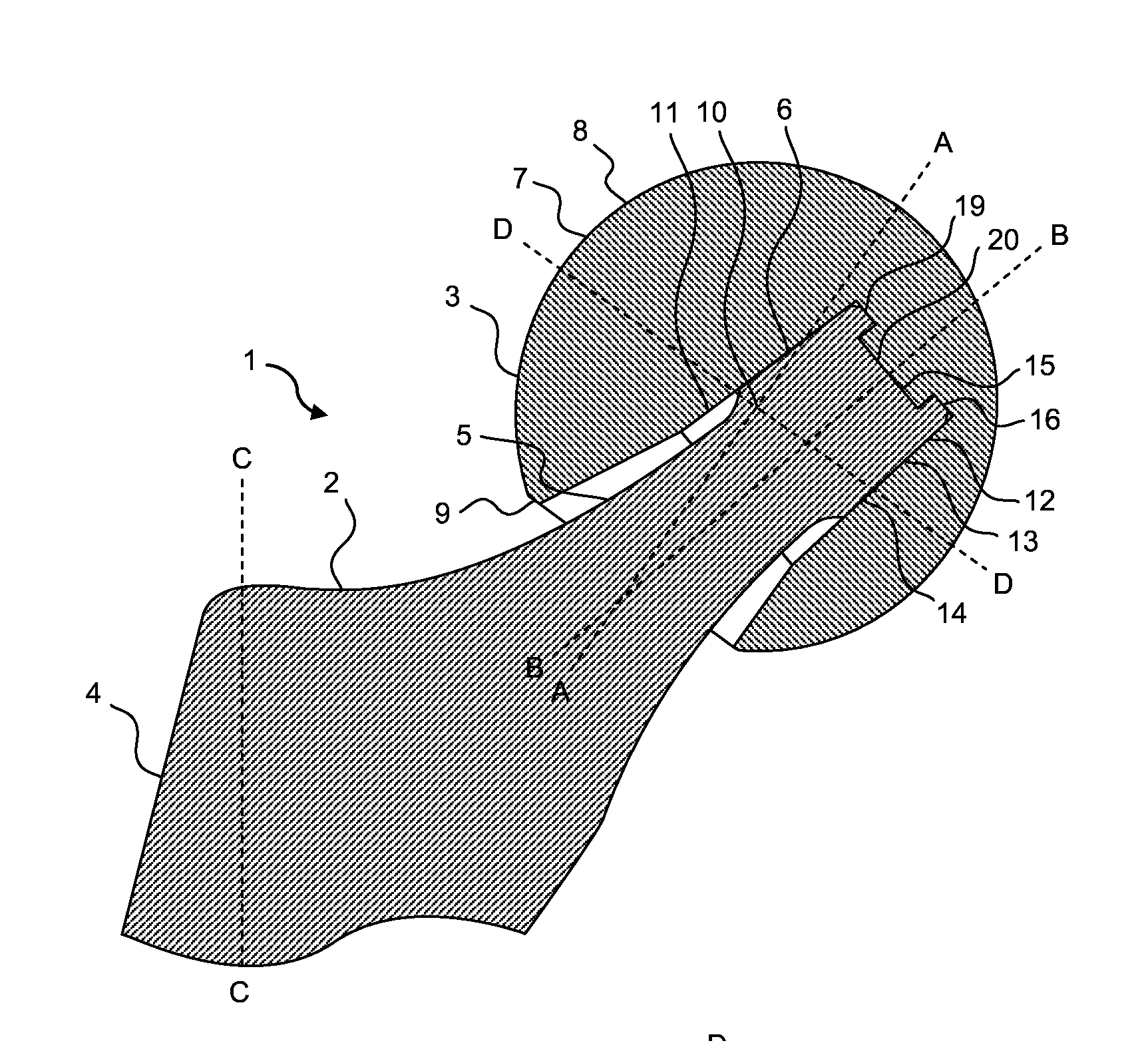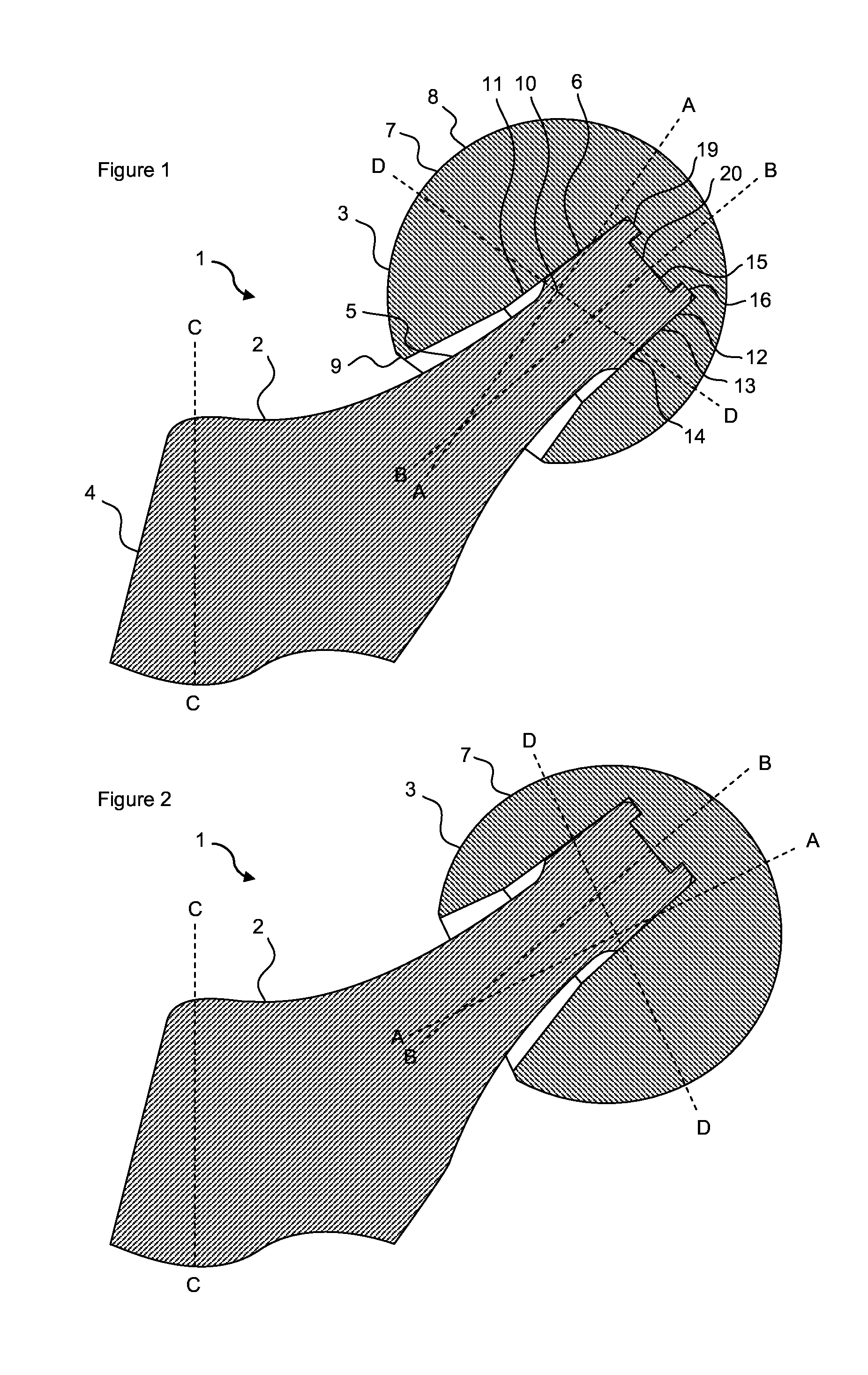Femoral prosthesis with an offset head
a technology of femoral prosthesis and offset head, which is applied in the field of femoral prosthesis, can solve the problems of affecting the quality of femoral prosthesis, and affecting the quality of femoral prosthesis, and achieves the effect of simple machine during manufactur
- Summary
- Abstract
- Description
- Claims
- Application Information
AI Technical Summary
Benefits of technology
Problems solved by technology
Method used
Image
Examples
Embodiment Construction
[0039]As shown in FIG. 1a femoral prosthesis 1 comprises a stem part 2 and a head part 3, in which the stem part 2 comprises a body section 4 for location in the femur of a patient (not shown) and a neck section 5 comprising a spigot 6, in which the head part 3 comprises a bearing surface 7 formed as part of a sphere 8 and a reverse side 9, in which the bearing surface 7 comprises a polar axis A-A extending through a center 10 of the sphere 8 formed thereby, in which a bore 11 is provided in reverse side 9 adapted to receive spigot 6, in which bore 11 comprise a bore axis B-B, and in which bore axis B-B is oblique to polar axis A-A.
[0040]The stem part 2 is similar to known stem parts of femoral prostheses, and comprises a tapering body section 4 (which is only partially shown in the FIGS.) for location in the intramedullary cavity of the patient's femur (not shown) in the known way. The body section 4 comprises a body axis C-C, and the neck section 5 carries spigot 6 at angle to the...
PUM
 Login to View More
Login to View More Abstract
Description
Claims
Application Information
 Login to View More
Login to View More - R&D
- Intellectual Property
- Life Sciences
- Materials
- Tech Scout
- Unparalleled Data Quality
- Higher Quality Content
- 60% Fewer Hallucinations
Browse by: Latest US Patents, China's latest patents, Technical Efficacy Thesaurus, Application Domain, Technology Topic, Popular Technical Reports.
© 2025 PatSnap. All rights reserved.Legal|Privacy policy|Modern Slavery Act Transparency Statement|Sitemap|About US| Contact US: help@patsnap.com



